In this guide, you will receive a comprehensive overview of the features of the Facebook Commerce Manager. After you have already created your shop and added products, we will now discuss the different aspects of the Commerce Manager in detail. The goal is for you to know exactly how to make the best use of the different tools to manage and operate your shop successfully.
Key Takeaways The Facebook Commerce Manager offers numerous features, including adding products, managing business accounts, analyzing sales, and optimizing your product offerings. It is essential to adhere to Facebook's commerce policies, especially regarding the types of products you want to offer.
Step-by-Step Guide
Accessing the Commerce Manager
First, you need to access the Facebook Commerce Manager on your Facebook page. In the upper right corner, you will find the options for adding new products. Go to "Add More Items" or select "Add Individual Items" to add specific products.
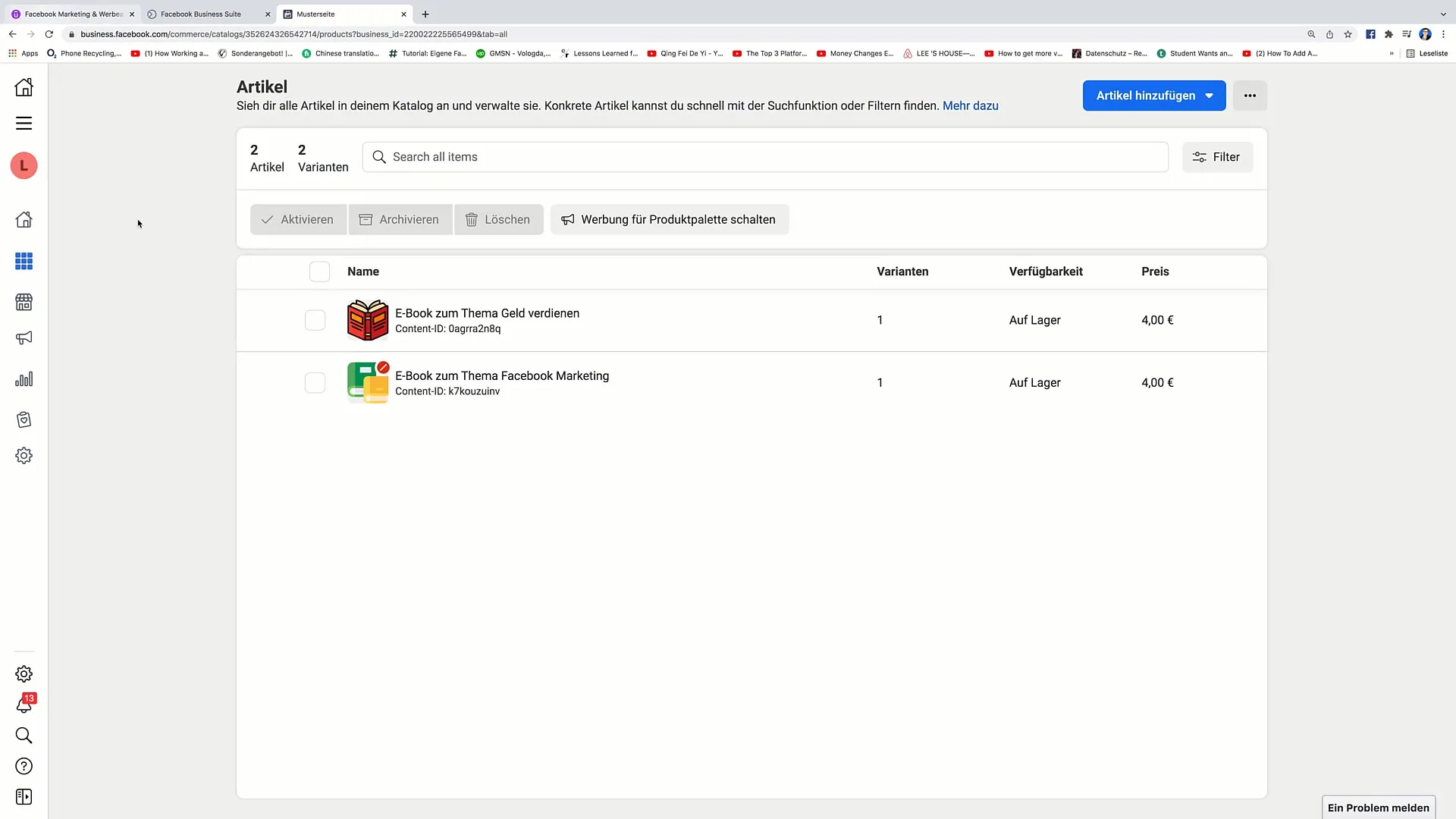
Adding Products
If you want to add multiple products, you will be redirected to an overview page. Here, you can either upload new products or manage existing products. Alternatively, you can also upload the specific item you want to add by clicking on the individual item template.
Managing Business Accounts
An important feature is the ability to switch between different business accounts. To do this, click on the corresponding section of the Commerce Manager and select the desired business account. If you manage multiple pages, you can easily switch between them here as well.
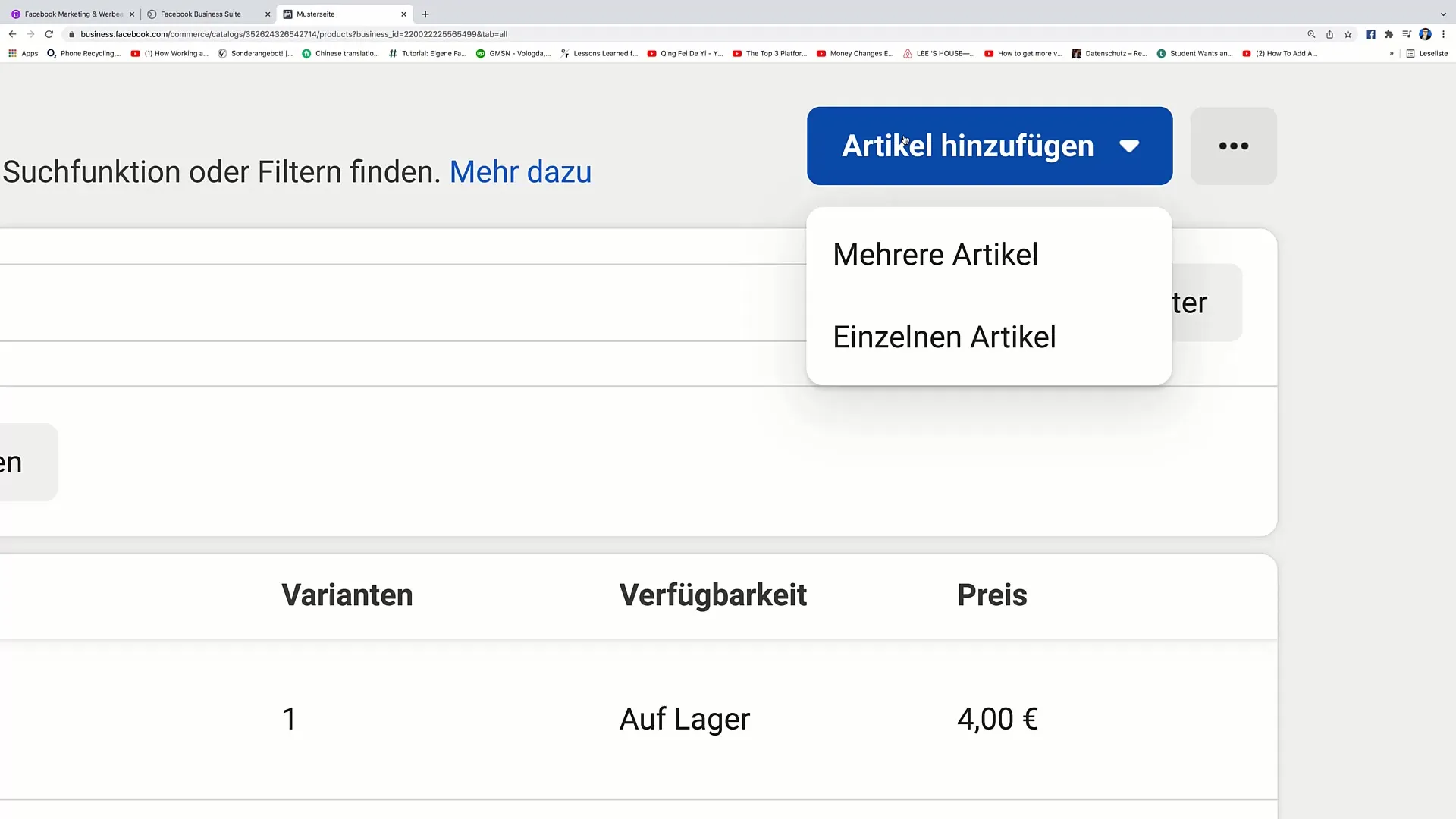
Monitoring Items
Now you can get an overview of all the products in your shop. Here you can see which items are active and which may have been rejected, as well as the reasons for it. For example, a product may be rejected if it violates the commerce policies. You have the opportunity to check such issues and make the necessary changes.
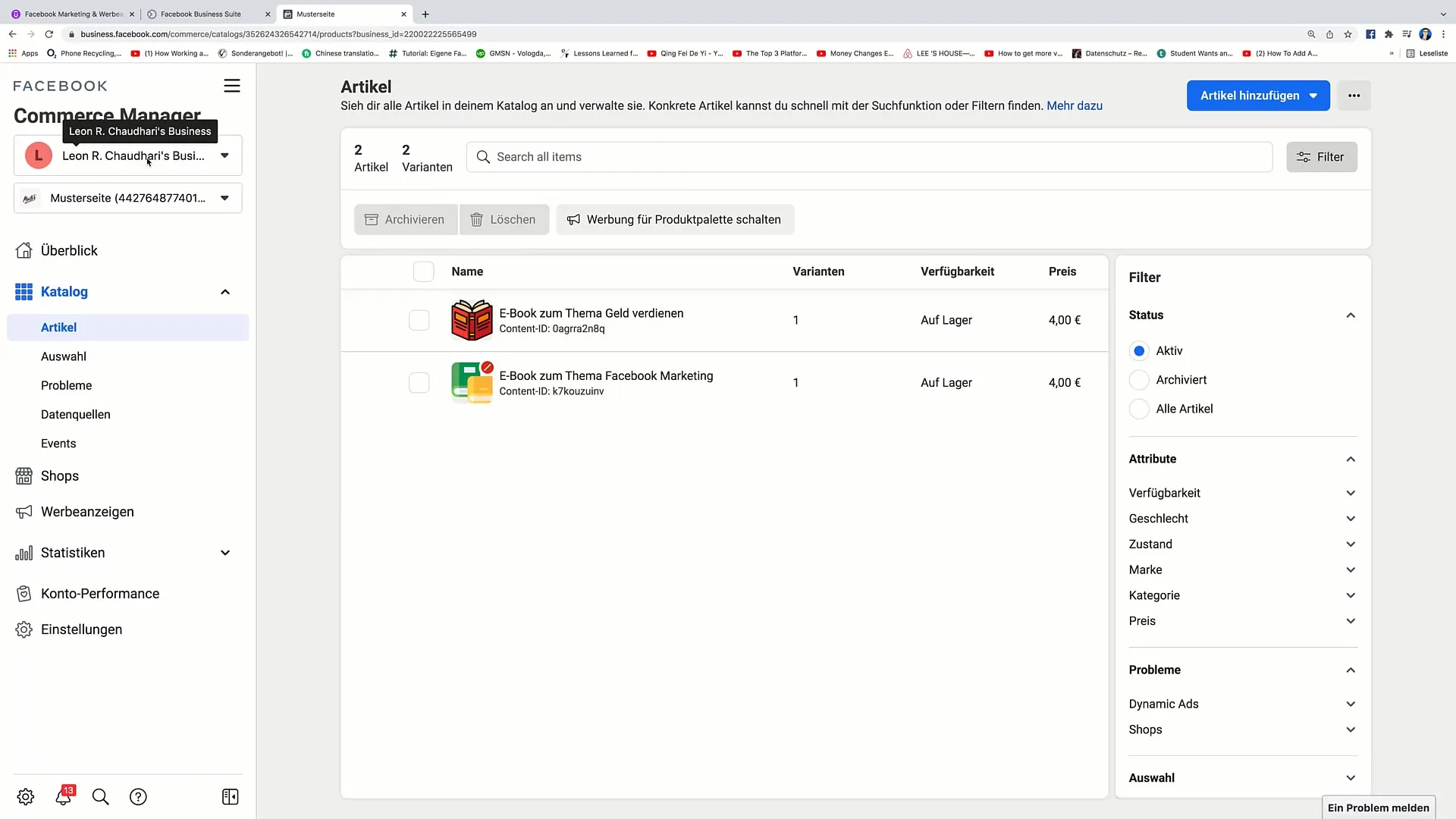
Adhering to Commerce Policies
It is important to consider Facebook's sales policies, especially when it comes to digital products. In many cases, digital products are currently not allowed, which you should keep in mind when creating product offerings. Regularly check Facebook's current policies to ensure you remain compliant.
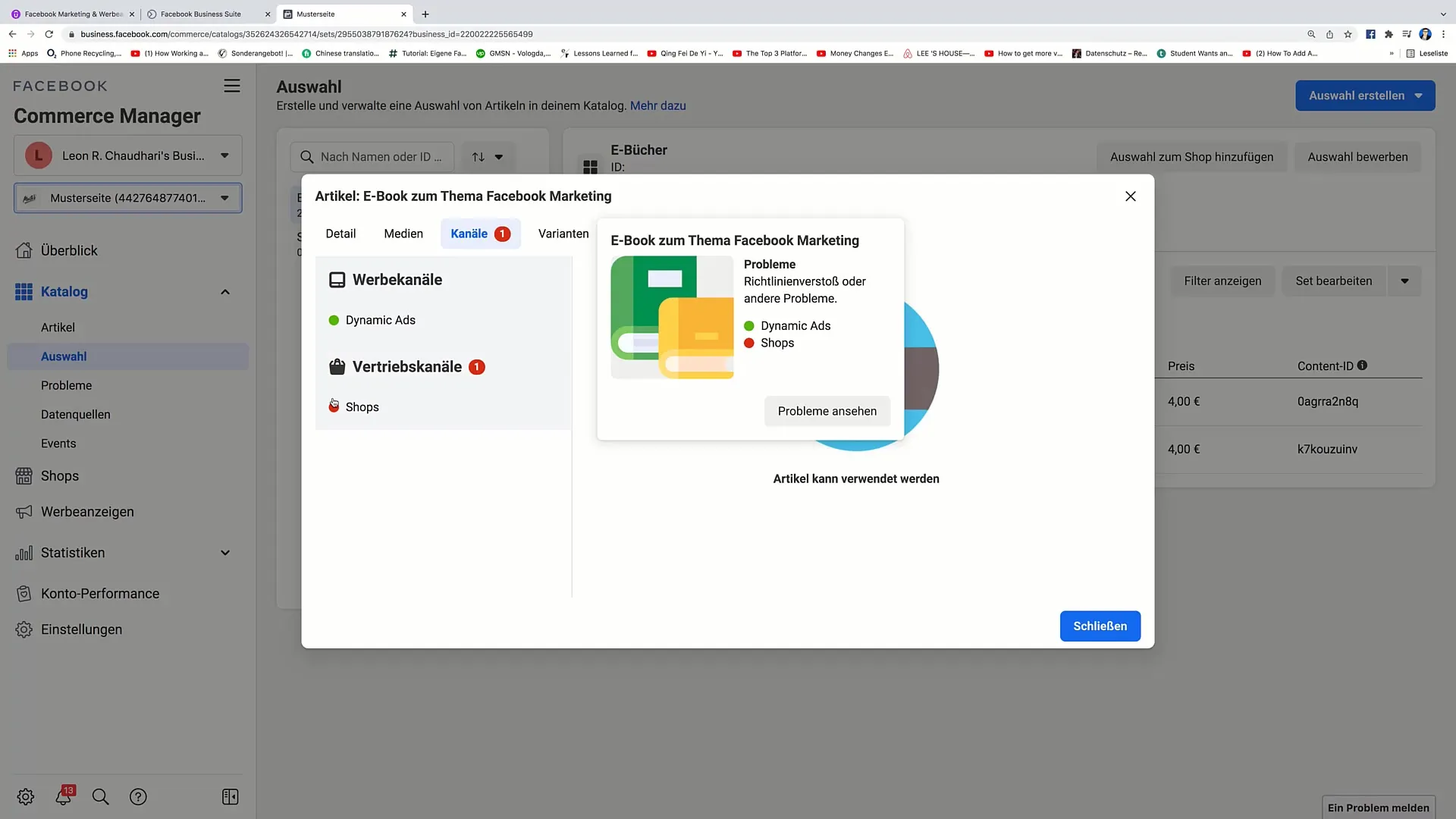
Deleting and Filtering Products
If you have products that are no longer relevant, you can delete them at any time. Additionally, there is the function to filter products by categories or by issues, which helps you maintain a more organized overview of your shop.
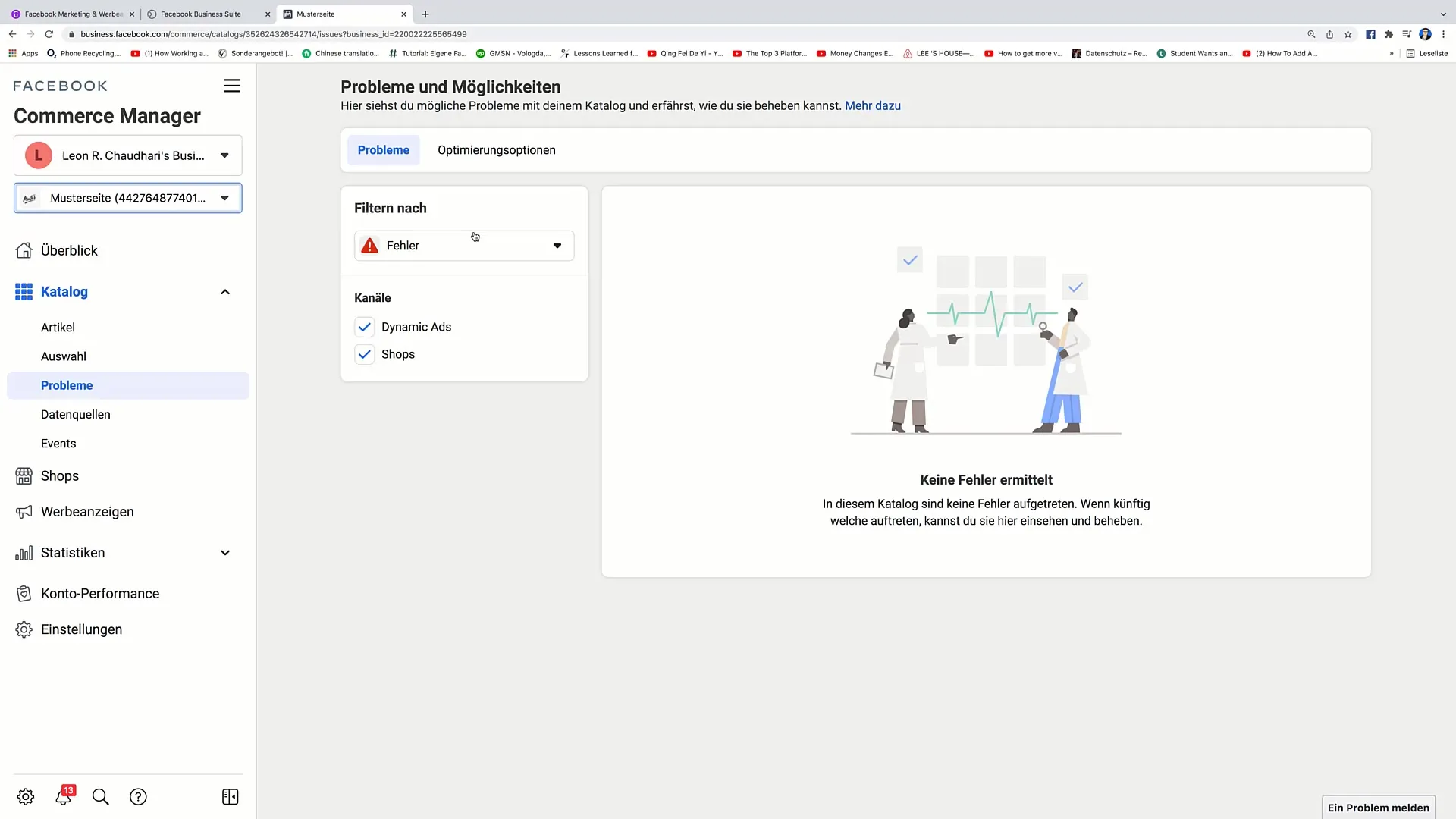
Troubleshooting
In the Commerce Manager, you can analyze existing issues with your products. Especially with dynamic ads and potential shop errors, it is of high importance to regularly look for optimization options.
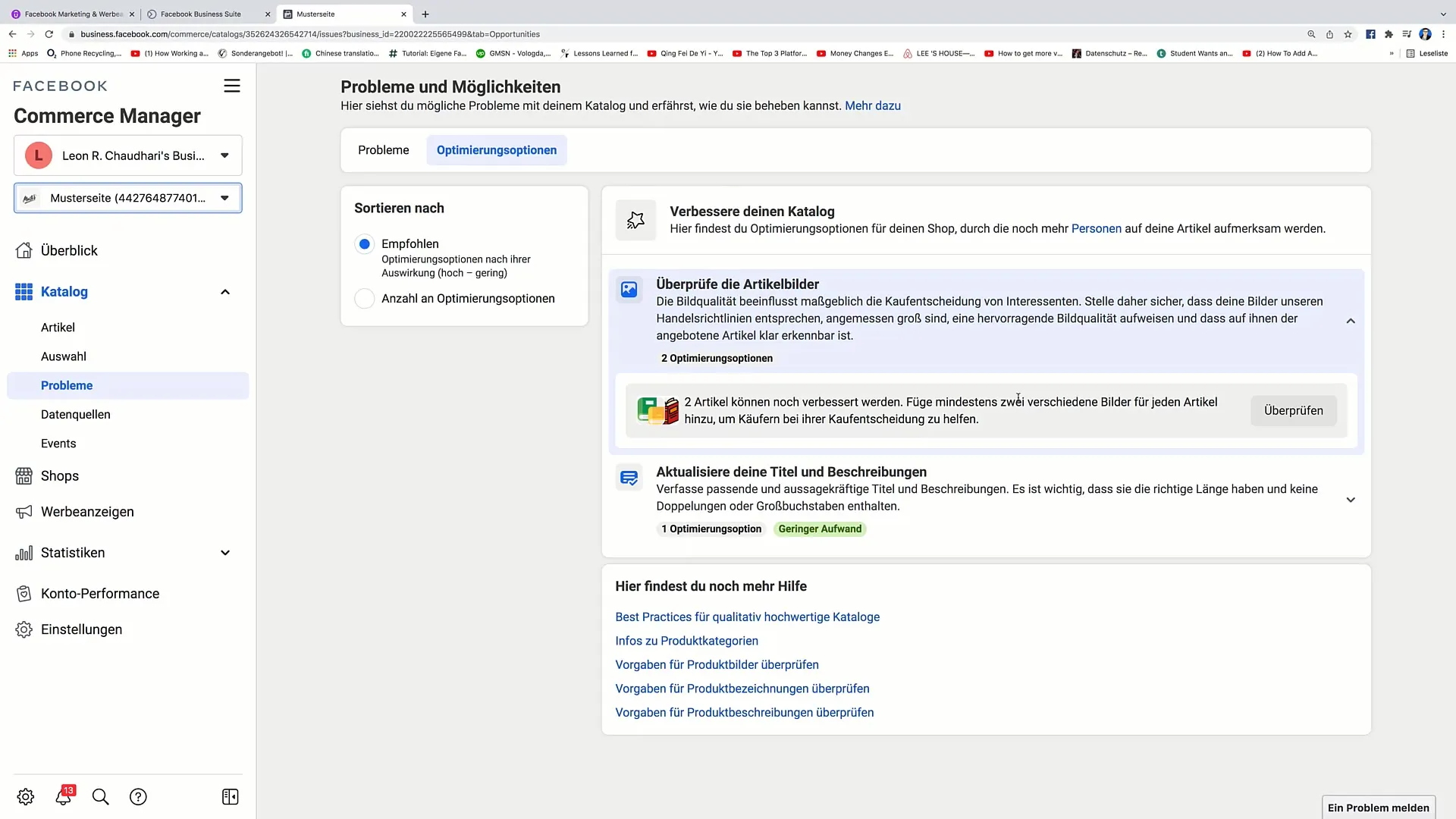
Reviewing Product Images and Descriptions
Be sure to regularly review your product images and descriptions. During your review, you may find that certain product details need to be optimized. For example, if the title or description does not meet the minimum requirements, you will be notified.
Adding Data Sources
In the "Data Sources" section, you have the option to manually add your products or import them via a product feed or pixel. These features are particularly helpful when managing many products, as they help you work more efficiently.
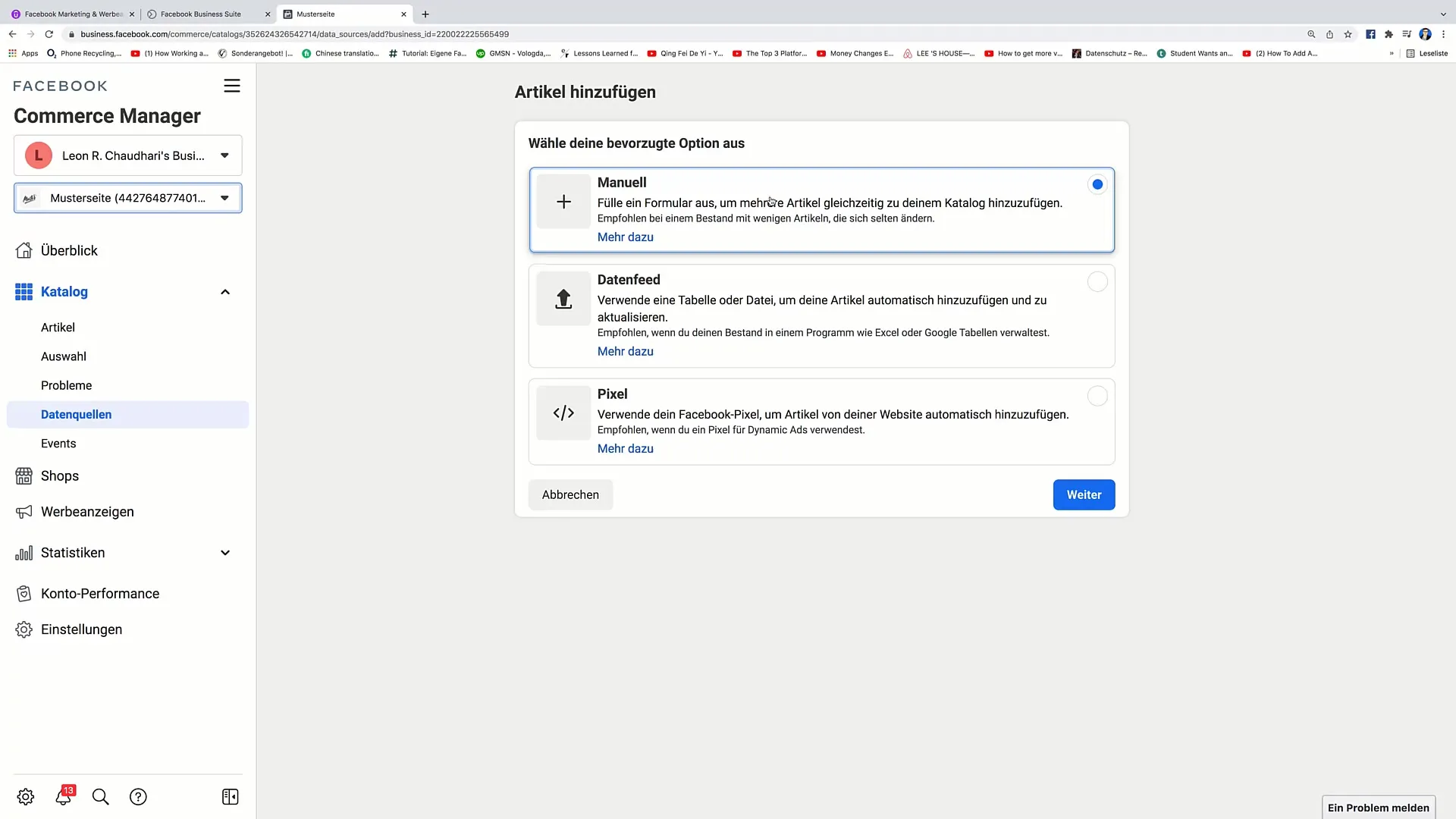
Events and Tracking
An important aspect of the Commerce Manager is event tracking. This way you can take retargeting measures by addressing specifically the people who have already been on your shop. This is done by setting up so-called Custom Audiences, which allow you to reach these visitors again.
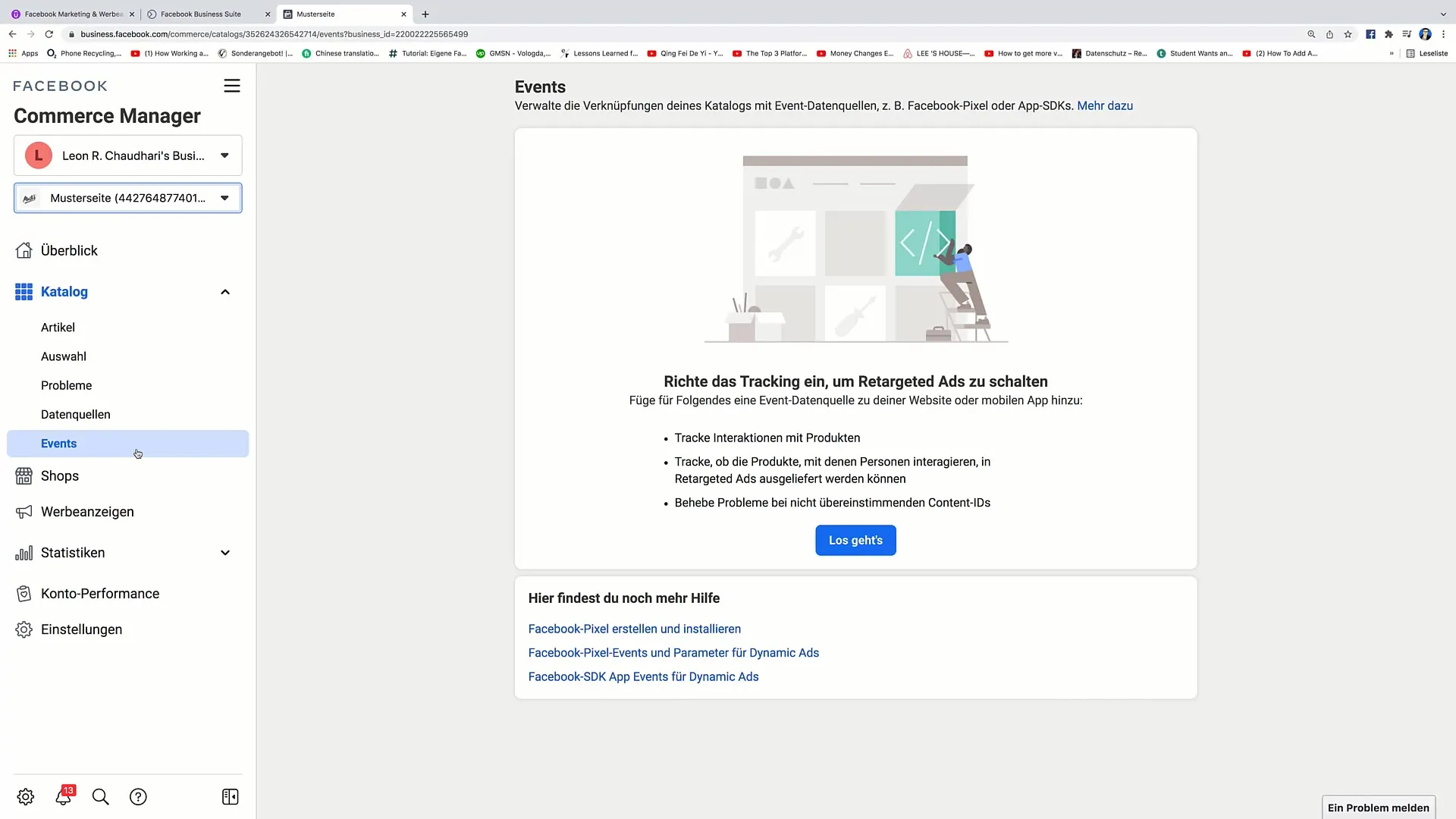
Overview of Shops and Advertising
If you manage multiple shops, you can also get an overview of all your shops. You have the option to advertise directly through the Commerce Manager, allowing you to create traffic ads and market your products specifically.
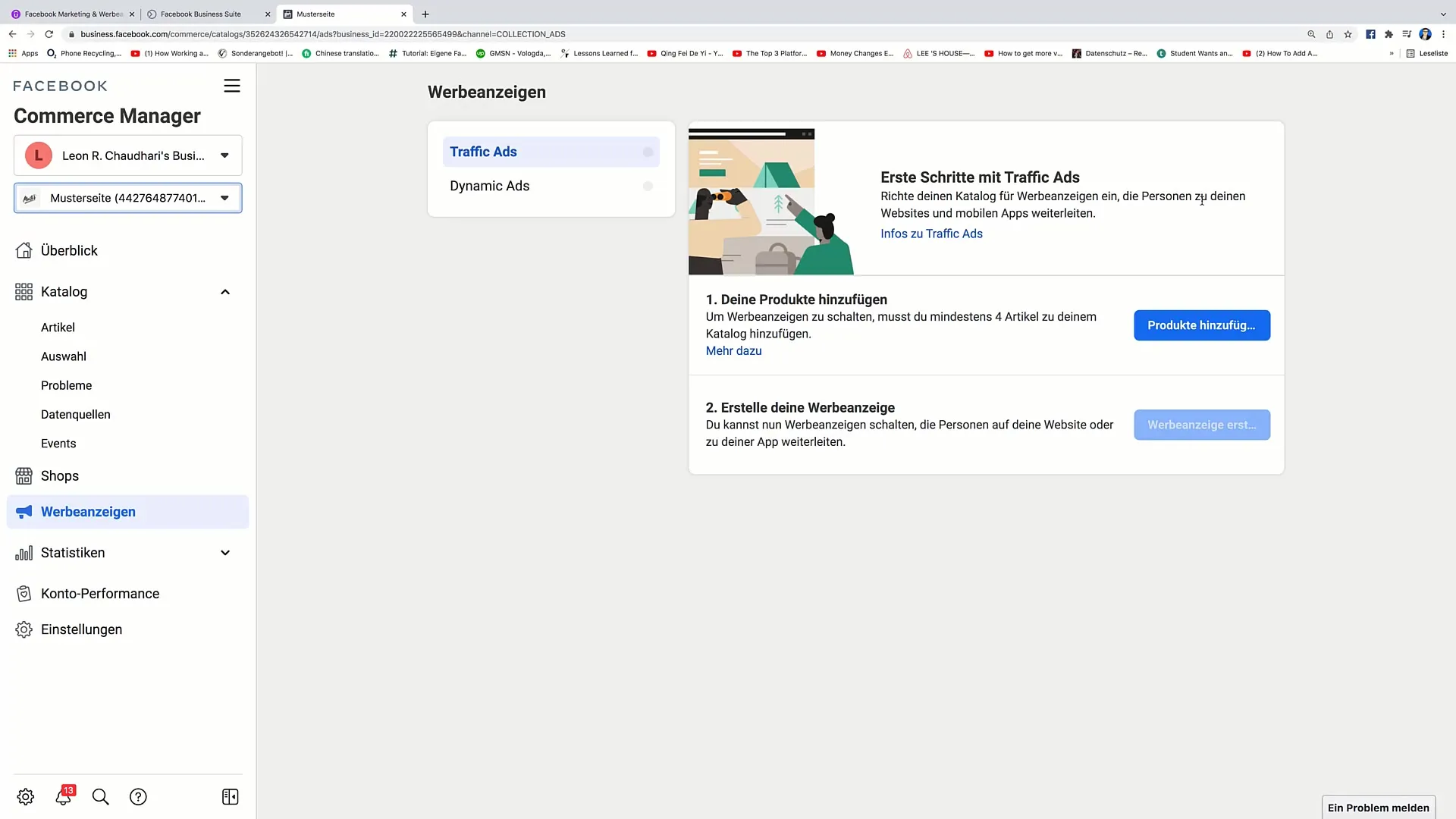
Use of Statistic Tool
The statistic tool in Commerce Manager provides valuable insights into the performance of your shop. Here you can analyze how many visitors your shop has, which products are frequently clicked on, and how many people actually made a purchase.
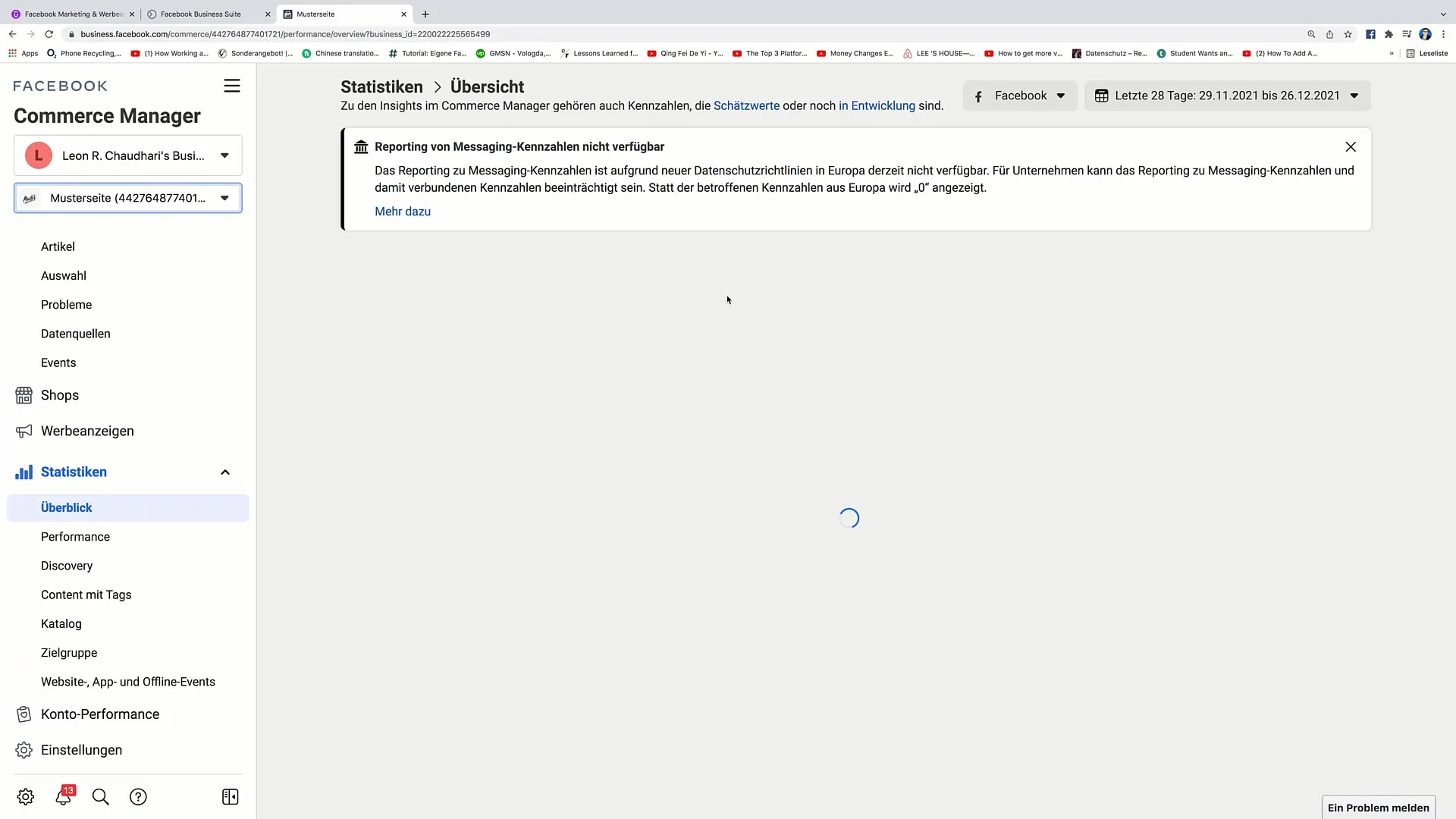
Target Audience Analysis
Furthermore, you have the option to analyze the target audience of your shop. You can gather information about the gender, age, and interests of your visitors and use this data to adjust your marketing strategies.
Publish Shop
Once you have completed all necessary adjustments and reviews, you can publish your shop in Commerce Manager. Click on "Publish Shop" to have your products go live and allow users to buy them directly through Facebook.
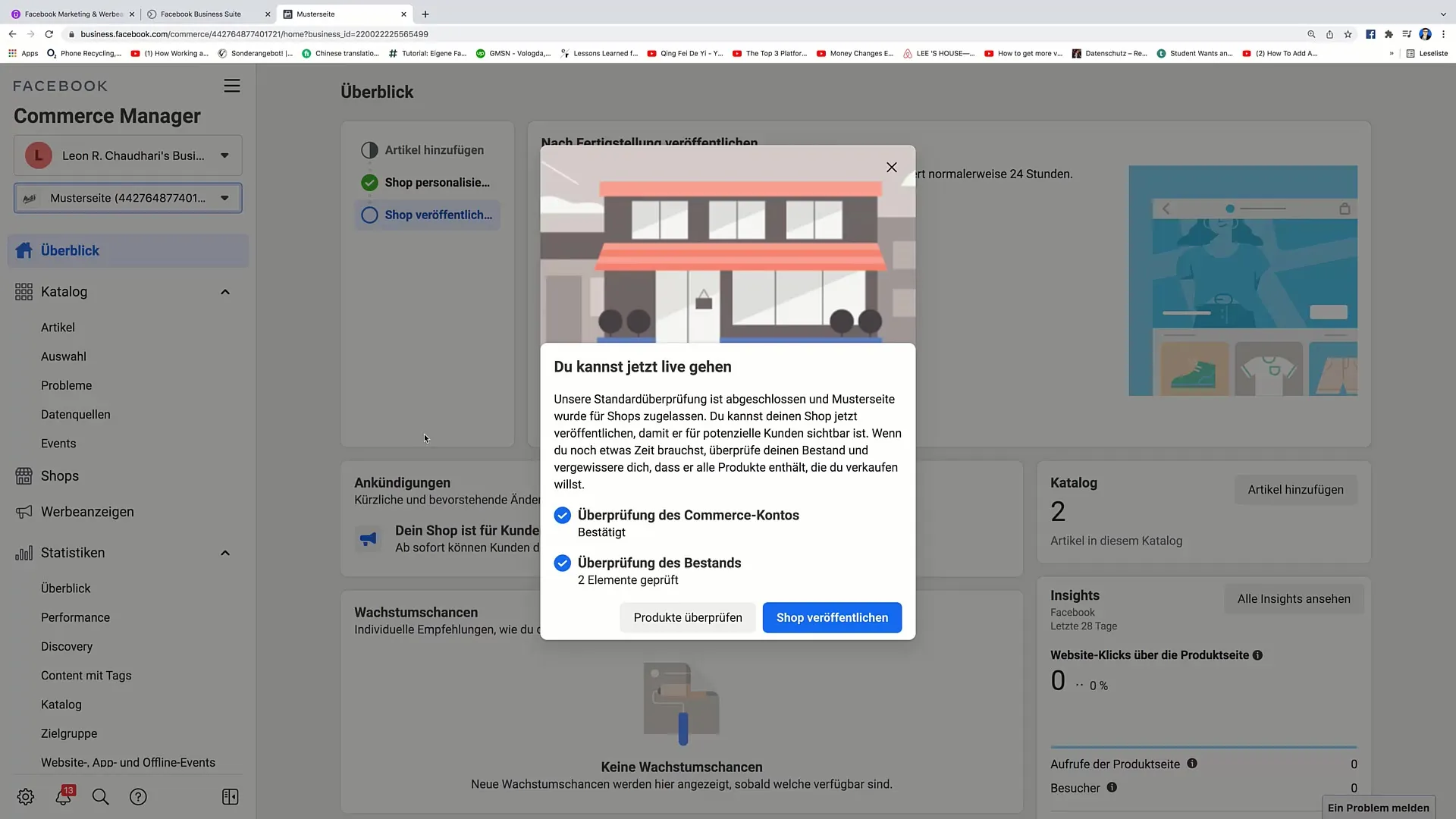
Summary
In this guide, you have learned the essential steps to correctly manage and publish your Facebook shop through Commerce Manager. Pay particular attention to complying with Facebook's trading policies and make use of the various tools that Commerce Manager offers you.
Frequently Asked Questions
How do I add products to my shop?You can add products manually or through a data feed by choosing the corresponding options in Commerce Manager.
What should I do if a product is rejected?Check Facebook's trading policies and update the product accordingly or request a reevaluation.
How can I analyze the performance of my shop?Use the statistic tool in Commerce Manager to gain insights into visitor numbers and interactions with your products.
Can I sell digital products through Facebook?Currently, digital products are not allowed in many cases. Regularly check Facebook's current trading policies.
How do I publish my shop in Commerce Manager?After adding and reviewing all products, click on "Publish Shop" to make your shop go live.


